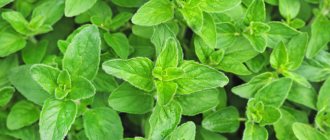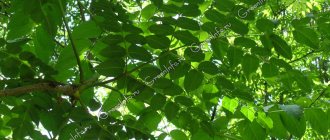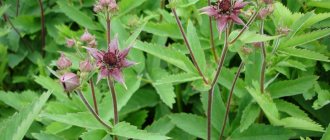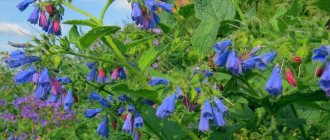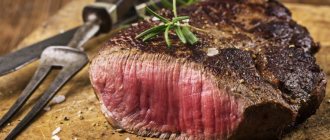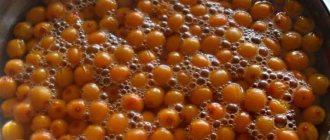The first mentions of the medicinal properties of honey were found in ancient Egyptian papyri about 5 thousand years ago, and the myths of Ancient Greece explained the immortality of the gods by the fact that they ate ambrosia, one of the components of which was honey.
Man, of course, has not yet been able to achieve immortality, but honey has many beneficial properties, and most of them have been scientifically proven. We have collected for you all the reliable facts about “sweet amber” and other beekeeping products.
History of honey
The oldest mention of bee honey was found in the Arana Cave near the Spanish city of Valencia.
The paintings in the cave show people climbing up the rock and taking out honeycombs, while bees fly around them. The age of the drawing is determined to be around 15 thousand years. Judging by written sources, the usefulness of bee honey was known 5 thousand years ago, during the times of ancient Egypt. According to descriptions in Egyptian papyri, beekeeping in Egypt was very developed and was a respected business. A unique feature of Egyptian beekeeping was that in the upper reaches of the Nile, honey collection began earlier than in its lower reaches. Therefore, beekeepers placed hives with bees on rafts and lowered them downstream. And the bees collected nectar from plants along the banks of the river.
In its modern form, beekeeping and the very structure of hives arose in the 7th-8th century BC in Greece. Partitions were added to the hive and the efficiency of honey collection was increased. The first scientific works on bee honey also appeared in Greece about 2.5 thousand years ago. The Greek scientist Xenophon, in his work Anabasis, described in detail the life of a bee swarm and the healing properties of honey. Later, his works were continued by Aristotle, who was also interested in beekeeping.
In ancient Rome, beekeeping was also not ignored. Even in Roman law it was stated that bees without a hive are ownerless and can be cultivated by any free Roman who wishes. Another work on beekeeping, this time by the Roman scientist Varro, dates back to the 1st century BC. The work describes in detail how to make a beehive and the beneficial properties of honey.
The first mention of bee honey in Rus' dates back to 945, when Princess Olga ordered mead to be brewed for the funeral of Prince Igor. Apparently, beekeeping at that time was already well developed and had ancient roots.
How did our ancestors use honey?
Until the Middle Ages (16-17th century), bee honey was the main sweet in Rus' and was used everywhere. Later, with the invention of sugar extraction from sugar beets and cane, sugar gradually began to become cheaper and displace honey from the main diet of people. Nowadays, this has led to the fact that bee honey is closer in consumption to delicacies than to staple foods.
Carbohydrates
The bulk of honey consists of carbohydrates. For humans, they are the main energy material that provides energy to all of its systems. About 60% of calories burned are replaced by carbohydrates. They also regulate biochemical processes inside a person. With their deficiency, performance decreases.
Carbohydrates are sugars. Scientists have counted more than 25 species of them. The most important are monosaccharides, accounting for 61-79% of the mass of the medicinal product, disaccharides (up to 5% in honey from nectar and up to 10% from honeydew) and dextrins (no more than 2%).
Chemical composition of honey
This is surprising, but in its chemical composition honey is very similar to human blood plasma and is absorbed by our body 100%. Not a gram of honey eaten is wasted just like that.
In general terms, honey contains:
- enzymes: catalase, amylase, diastase, phosphatase;
- vitamins C, E, B;
- trace elements: aluminum, zinc, nickel, chlorine, lithium, tin and others;
- folic acid;
- pantothenic acid.
With such usefulness it’s time to be a cure for all diseases! Honey is a little short of a panacea, but it has a wide range of medicinal properties.
Pollen
The composition of honey is always diluted with pollen. She gets there in two ways:
- Through nectar, when when a bee moves along a flower, it falls into the nectary;
- Through the paws of little workers when putting honey into honeycombs. Bees transfer microscopic balls of this gift of flowers to them to feed their offspring.
Pollen itself has a huge amount of useful substances and chemical elements. There are about 50 types of active compounds that stimulate metabolic processes, almost all amino acids, about 30 types of micro- and macroelements and other substances. Therefore, in tandem with honey, they represent the most effective team affecting human health.
Harm
As such, there is little harm to health from honey. As with any food, they should not be abused and should not exceed the daily allowance. Overeating honey can have a serious impact on the kidneys and pancreas due to the high content of fast carbohydrates in bee honey.
If you heat honey to 42 degrees, it will not only destroy many of the beneficial substances in its composition, but will also lead to the release of substances harmful to the human body.
Be careful! Some unscrupulous packers may heat honey before packaging so that it becomes more liquid and flows better into the container.
Acids
The taste of honey is significantly affected by acids. They enter it through nectar and pollen. There are also acids in honeydew. A number of them are formed during the fermentation of sugars. Some of them are introduced into honey by bees from their glands. In this case, acids of both organic and inorganic origin are found.
Organic acids
Organic acids are present in the cells of representatives of both the animal and plant worlds. They are a byproduct of the conversion of carbohydrates into other biological compounds. During protein synthesis, organic acids are responsible for the formation of amino acids.
They are represented very widely in honey - more than 20 species. Basic:
- wine;
- vinegar;
- apple
Contains from 0.1% to 0.3%. There are significantly more of them in honeydew honey than in flower varieties. However, in dark types of product the acidity is much weaker, which is reflected in the taste.
In the composition of honey, the role of acids is reduced mainly to protective functions: to protect it from the effects of various bacteria and microorganisms that die in an acidic environment. They also support the activity of a small group of enzymes that persist and operate only at a certain pH value (a measure of acidity).
In the human body, organic acids regulate the acid-base balance in the gastrointestinal tract, inhibit the development of pathogenic microflora, dissolve salt deposits, thereby quenching thirst.
Inorganic acids
Hydrochloric and phosphoric acid can be found in natural honey. Their content does not exceed 0.03%. Being in the form of salts, they do not have a significant effect on the acidity, taste and aroma of the main beekeeping product.
Contraindications
In addition to the endless list of beneficial qualities of honey, it has few contraindications. Unfortunately, this amazing product is contraindicated if you are allergic to bee products (often not all types of honey cause allergies). Honey inhalations are completely prohibited for asthma, heart and lung diseases, and high fever.
Honey is contraindicated for diabetes, and it should be avoided not only by people with already developed disease, but also by those who have a high genetic predisposition to it. It is easy to find out this predisposition - for this you can undergo genetic testing, which will show what your risk of developing diabetes is.
In addition, such a genetic report will help you understand the peculiarities of carbohydrate metabolism and understand how much sweets you can, in principle, consume, will give information about the diet that is most suitable for you, as well as the forms of vitamins and dietary supplements that are suitable for you.
Dyes
Honey contains coloring substances in small quantities, the composition of which depends mainly on the botanical origin of the honey and the location of the honey-bearing plants. Coloring substances are represented by carotene, chlorophyll, xanthophyll. They give light-colored honeys a yellow or greenish tint. Most of the coloring substances in dark honeys are anthocyanins and tannins. The color of honey is also affected by melanoidins, which accumulate during long-term storage and heating of honey and give it a dark brown color.
Types of honey
Another amazing feature of honey is that by pollinating various plants, bees make various honeys from their nectar. The following varieties are distinguished:
- Buckwheat honey Considered one of the most useful. The content of amino acids and microelements in this type of honey is almost 2 times higher than in others. The variety is best suited for the treatment of colds, skin diseases, vitamin deficiency, anemia, hypertension and protein metabolism disorders.
- Sainfoin honey. This type of honey is quite rare and is not easy to find on sale. It contains: carotene, ascorbic acid, minerals, vitamins and biologically active substances. This honey also has a subtle aroma and moderate sweetness.
- Acacia honey. It is popularly believed that this honey is best for insomnia and neurological disorders. A distinctive feature of the variety is that it contains equal amounts of glucose and fructose.
- Heather honey. The variety hardly thickens, is highly viscous and slightly bitter. It has a high mineral content and is recommended for the treatment of vascular diseases, nervous system disorders and lack of appetite.
- Chestnut honey Similar to heather honey in taste and consistency. Helps the body fight germs, improves immunity, treats diseases of the gastrointestinal tract and kidneys.
- Linden honey. One of the lightest and most fragrant varieties. But its main advantage is that it helps in the treatment of asthma, bronchitis and sore throat. Also recommended for the treatment of kidneys, intestines and stomach.
- Sunflower honey. One of the most common varieties of honey in the Russian Federation. It is characterized by a high content of glucose and amino acids necessary for protein synthesis.
- Sweet clover honey. Another rare variety with a subtle vanilla aroma and amazing taste. This type of honey helps to dilate blood vessels, normalize metabolism and helps with diseases of the blood vessels and gastrointestinal tract.
Water
Many buyers of the sweet product are sure that the water in it appears only as a result of the machinations of unscrupulous sellers who dilute it with sugar syrup. And they all know a dozen ways to detect this liquid in honey.
In fact, the natural, flavorful treat contains between 15 and 21% water. Its quantity is determined by many factors:
- the period during which bees collect nectar;
- type of honey plant (honey variety) - each plant has its own, unique ratio of water and other chemical compounds in the composition of the nectar;
- climatic zone where beekeepers work;
- product maturity;
- storage conditions (container and terms).
The level of water content in honey is regulated by law in many countries. Often this indicator is the main one when ranking it by variety.
In Russia, GOST provides for a maximum water content of 20%. The exception is cotton varieties - for them this figure is 19%. In a number of countries, the maximum humidity is 21%.
The limit of 20-21% moisture in honey is explained by the fact that at a humidity of 21% and above, a spontaneous fermentation process begins. Wild yeast races begin to decompose carbohydrates, resulting in an unpleasant odor and sour taste. The product loses its presentation.
Use in cosmetology
The very first case of using bee honey for cosmetic purposes is attested in Egypt. The ancient Egyptian queen Cleopatra made masks of honey for her entire body, and they wrote that she was famous for her beauty.
Some components of honey can be absorbed through the skin and absorbed directly by cells, which makes masks with honey very useful. With their frequent use, the skin becomes not only externally healthier, but also internally strengthened. Using a honey-based mask you can:
- for problem skin with enlarged pores, tighten them;
- accelerate cell division and thereby rejuvenate the skin;
- retain more moisture in the skin if it is too dry;
- cleanse the skin of pimples and blackheads and activate its breathing.
The significant effect of regular use of masks containing honey is noticeable on skin that is flabby and has already lost its vitality. In addition to masks with honey, the modern cosmetics market also offers: scrubs, wraps, creams and even honey shampoos! And bee honey, even in its pure form, can be used for massage.
Gynecology
Due to the rich set of useful and balanced components that give the product antibacterial, wound-healing and anti-inflammatory properties, the benefits of honey for a woman’s body can be very noticeable, especially in such an intimate area of health as gynecology.
Its therapeutic effect has been proven for the following diseases and pathologies:
- candidiasis (thrush);
- inflammation of the ovaries, uterus, including fallopian tubes;
- cervical erosion (ectopia);
- proliferation of endometrial cells (endometriosis);
- changes associated with menopause;
- benign tumors (cysts);
- problems conceiving a child (infertility);
- disorders that occur in expectant mothers.
Remedies with honey:
- restore microflora;
- eliminate discomfort;
- will increase the body's resistance;
- will strengthen the immune system.
To get rid of problems in the field of gynecology, honey is used not only internally. It is used for douching, applications, compresses, tampons and suppositories are made. In this case, a prerequisite is the naturalness of the product. It is dangerous to use counterfeit products both internally and externally &mdsah; is fraught with irritation of the mucous membranes.
Information: in the treatment of gynecological diseases, linden, mint and lemon balm bee products are most effective.
Is honey for pregnant women beneficial?
If there are no other contraindications, consuming honey during pregnancy is not only possible, but also necessary! Honey has a beneficial effect on the formation and growth of the fetus, increases uterine blood circulation, and relieves excess tension from the smooth muscles of the uterus, blood vessels and bronchi.
During pregnancy, honey is indispensable for the treatment of colds, and many medications are undesirable or completely contraindicated. With severe toxicosis, honey helps fight nausea and improves appetite. During childbirth, honey can also be useful - it is administered to the mother in labor to prevent exhaustion and facilitate the birth of the child.
It is not recommended to exceed the daily amount of honey and consume it on an empty stomach!
Microflora
Being both a product of plant and animal origin, honey has a specific microflora. At the same time, it can be primary, entering the combs when honey is added, and secondary, introduced into the finished product during its processing or storage.
About 40 species of bacteria, spores and yeasts were found in the primary microflora. High sugar content inhibits their growth (with the exception of yeast). They begin to grow actively when the humidity of the sweet product increases above 21%. In general, the microflora of honey is absolutely safe for humans.
Benefits for children
Children often suffer from colds, stay home for weeks and miss school. Treating a child's cold with bee honey will not only quickly get the child back on his feet, but will also strengthen his immunity - he will get sick much less often.
In addition to the fact that honey relieves cough, it has antibacterial properties and restores damaged cells in the respiratory tract. Honey is used to treat chronic runny nose; radish juice with honey is recommended for the treatment of bronchitis, pneumonia, bronchial asthma and tracheitis.
If a child is very tired from studying, regular consumption of honey will also help - the simple sugars in its composition are good food for the brain. Honey serves as an antidepressant: it relieves irritability, anxiety, and normalizes sleep. The presence of antioxidants in honey not only strengthens the body and improves brain function, but also reduces the risk of cancer.
At what age should I start?
Early consumption of honey is highly undesirable. Honey may contain bacteria that are harmless to adults, but harmful to the health of a newborn. Also, honey can act as a strong allergen, and eating it before the age of three is highly likely to establish an allergic reaction to it in the body, which will last a lifetime.
The easiest way to detect an allergic reaction is to apply a drop of honey to your child's skin or let it eat it. If no symptoms appear, then honey can be given, but not exceeding the daily norm - overeating honey in childhood can lead to allergies.
Daily norm
The daily requirement of honey for an adult, regardless of gender, is no more than 150 grams. It is best to consume this amount in small portions throughout the day. For children, the daily norm is approximately 2 times less and is 50-75 grams. You can consume honey on an empty stomach, but after that it is recommended to eat normally within half an hour.
Hormones
The main hormone in honey is acetylcholine. It functions as a mediator (conductor) in the central nervous system. There is no need to consume honey to replenish this hormone. The body produces it without problems even in a weakened state.
However, with acetylcholine, when it enters a living creature along with honey, metamorphosis occurs. It becomes an amazing remedy, comparable in effectiveness to the best synthetic drugs, restoring heart function. It slows down the removal of potassium from cardiac cells and activates the flow of glucose into the myocardium.
In addition, it promotes normal digestion, has a positive effect on the functioning of the bladder and kidneys, and regulates metabolism.
In 1931, another hormone was discovered. This is honey “growth hormone”. Numerous studies have shown its effective effect on seedlings of many plants.
When feeding small doses of honey to infants up to 4 months of age, they experienced more intensive growth.
Benefits for men
The main “male” health problems are considered to be: heart attack, nervous disorders, prostate diseases, decreased potency and baldness. All these diseases of men can be treated with honey to varying degrees:
- Flower pollen normalizes the functioning of the endocrine system.
- Zinc stimulates hormone production.
- Vitamin C makes sperm more motile.
- The antibacterial properties of honey help in the treatment of prostate diseases.
- Vitamin B stimulates hair growth, amino acids and sugars are involved in the synthesis of testosterone, the lack of which leads to baldness.
Aromatics
Currently, about 200 aromatic substances have been identified in honey. These substances are represented mainly by alcohols, aldehydes, ketones, acids and esters of alcohols with organic acids. There is evidence of the participation of simple sugars, gluconic acid, proline and hydroxymethylfurfural in the formation of aroma. The aromatic substances in honey give it a specific pleasant aroma, which depends on the type of honey plant. Some honeys, such as tobacco and goldenrod honeys, have an unpleasant odor; fireweed and white acacia honeys have almost no odor. Over time, especially when honey is heated or stored in a room with high temperatures, aromatic substances evaporate, and the aroma of honey weakens or is replaced by an unpleasant odor (fermented honey).
Benefits for women
In addition to the widespread use of honey in cosmetics, it also has many beneficial properties, primarily interesting for women:
- Vitamin B9 significantly reduces the risk of ovarian and breast cancer. Inhibits the growth of tumors at the first stage. In the first trimester of pregnancy, it prevents defects in the development of the neural tube of the fetus.
- Vitamin A increases the chance of conception and stimulates breast milk production.
- Vitamin E is called the “main women’s vitamin.” It is involved in the production of female sex hormones, enhances fertility, and normalizes the menstrual cycle.
Heart and blood vessels
Due to the glucose it contains, honey works well for various diseases of the heart and blood vessels:
- coronary vessels dilate;
- their walls are strengthened;
- myocardial tone is regulated;
- the process of hematopoiesis and blood composition are normalized;
- The internal energy of the body is activated.
Combinations of honey with other products have proven themselves to be effective in the fight against cardiovascular diseases. It is taken with fruits, nuts, dried fruits, milk, and cottage cheese.
Added to rosehip decoction, honey helps eliminate swelling, normalize diuresis, and relieve stress on the heart. For ischemic disease, take a honey-garlic mixture. Atherosclerosis is dealt with using a honey-onion product.
Honey for diabetes
Eating any product containing carbohydrates increases blood sugar levels, so such foods should only be consumed on the advice of a doctor. And honey is no exception.
It is easier for insulin-dependent diabetics to eat honey - it is enough to inject insulin on time, which is necessary for the absorption of sugars. With type 2 diabetes, everything is more complicated. This type of diabetes is characterized by insulin resistance, the insensitivity of cells to insulin (complete or partial). In this case, sugars are not absorbed by the body in the proper amount and accumulate in the blood. And the pills slowly lower blood sugar levels.
Phytoncides
Phytoncides are antibiotics created by nature to protect the plant world from bacteria, microscopic fungi and protozoa. Even their name is translated from Greek and Latin as the plant’s ability to kill (Greek “phyton” - plant and Lat. “cedere” - I kill).
In plants they are present both in nectar and pollen. Taking bribes, the bee transfers phytoncides into honey. In it and propolis, chemists discovered avenacin, benzoic acid, tannins and other phytoncides. Being in them in a microscopic volume, they, together with other biologically active compounds, transform these products into a powerful antibacterial agent that can resist anthrax, typhoid, brucellosis and other infections.
Improving facial skin
Honey cleanses the skin well, heals microcracks, and gives a natural tint. It makes the skin elastic and smoothes out wrinkles. Helps retain moisture in deep subcutaneous layers. A cosmetic product at home will help improve blood circulation. Will make facial skin fresh and rested. Facial recipe:
- honey - 1 tbsp. spoon;
- water – 1 teaspoon;
Stir honey in water. Apply the resulting liquid to your face for 2 minutes. Distribute the resulting substance with slow movements throughout the face. Afterwards we wash everything off. Gently pat your face dry. This procedure can be repeated daily if there is no allergy to honey.
Immunity
Since honey is rich in mineral and vitamin complexes, it can be used to significantly strengthen the immune system without the use of medications. When the epidemiological threshold for respiratory infectious diseases and colds is exceeded, it is recommended to add honey to tea - both for preventive purposes and for a speedy cure of the patient.
The api product reduces pain in a sore throat and relieves cough. It gives strength to an organism weakened by disease. Use it alone or in combination with other useful products:
- onions and garlic;
- dried fruits with nuts;
- lemon and aloe;
- ginger root, etc.
Important! It is not advisable to heat honey above +35°C to avoid loss of healing properties. When adding it to tea, wait until the drink has cooled slightly before adding honey.
conclusions
If you are faced with the task of choosing the right bee sweets, then consider the following nuances:
- honey can only be liquid for a month after collection, after which it crystallizes;
- Honey should absolutely not have foam. If it is present in the jar, this indicates the presence of fermentation.
You should not focus on the color of the product, since the shade may vary depending on the region, time of year and other nuances.
Which honey is best to buy, choose for yourself, but be sure to ask the seller to taste a little honey before buying, so you can immediately determine how tasty and natural it is.
Order elite varieties of honey from the leader and be sure of the quality of the product, because Bashkortostan has the best varieties of honey in Russia!
© Mulyukov S.G., author of articles, director of Bashkir Apiaries + LLC, 2021, https://www.facebook.com/sergey.mulyukov



